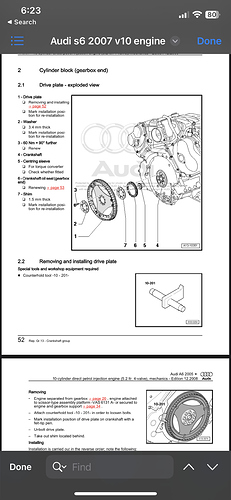Great read. The most curious section for me is the balance shaft section:
Balance shaft and vibration damper
The BXA engine had a nodular cast iron balance shaft that was located in the ‘V’ section of the upper crankcase housing between the cylinder banks. The balance shaft rotated in the opposite direction to the crankshaft and at the same speed to offset first order inertia forces.
A vibration damper was fitted at the front of the engine to absorb crankshaft torsional vibrations created during the power stroke. The damper had three main components:
- A counterweight to the crankshaft;
- An accessory drive pulley; and,
- A bonded element (elastomer rubber) that joins the two pieces together.
Viscous oil was used to dampen the relative movement between the elastomer rubber element and the accessory drive pulley – this reduced torsional stress on the crankshaft during combustion and reduces stress to the crankshaft from accessory components driven by the poly-V belt.
I question if long term use of a light weight crank pulley would be determinate and counterintuitive to what the engineers at Audi were trying to prevent? Thinking about my broken crank as I’m trying to give the car away.

